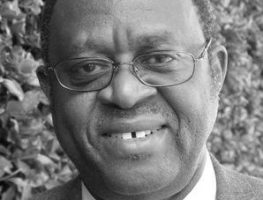This is the 4th post (of 5) in our “Scandal of the Evangelical Memory” series: see Part 1, Part 2, Part 3, and Part 5.
Let’s return to Douglas Quaid, the protagonist from Total Recall, who had his memories erased. He had forgotten that while he we a secret agent he had switched sides and began helping the resistance. He forgot that he was captured and then stashed in a factory with fake memories in order to ferret out the remaining resistance.
In Part 1 we used Quaid’s problem in order to jump-start our quest for the real “evangelical” memory beyond Reformed and/or Fundamentalist memories propagated as “true evangelicalism”.
But here’s the twist: Quaid’s problem was all a trap planned by the government. In fact, Quaid is the mastermind behind it all, offering himself to be brainwashed to infiltrate the resistence and double-cross them.
What does that mean for our search for our “evangelical memories”?
Inescapable Memories
As much as I’ve been trying to re-situated ‘evangelical memory’ as more than faithfulness to Reformed theology and/or conservative Fundamentalism, we cannot ignore the profound impact of the rise of Fundamentalism on evangelical memory. Like it or not, the ‘great reversal’ described below represents us, or our churches, or the people we minister to and with. We have to stop shaking our fingers at them and begin to understand them.
But (major caveat) in discussing the rise of Fundamentalism a hundred years ago we must remember that “evangelicalism is not fundamentalism…Rather, the evangelical movement dates from the early eighteenth century—preceding the rise of fundamentalism by almost two hundred years.”[1]
We talked before of the ‘minority report’ on the revivalism, reformism, and radicalism of evangelicalism before fundamentalism (1700-1900). But the great revivals led to the great reversal in which evangelicals (after fundamentalism) abandoned the social movements of the 20th century. Why?
Great Reversal: 3 Shifts
This summary involves a certain amount of reduction, but three shifts occurred between 1850 and 1950 that caused the great reversal, and these three shifts help explain why salvation, scripture, and science are so important to post-fundamentalist evangelicals. These shifts give nuances to the general idea of a fundamentalist-liberal schism in the early 20th Century.
From the Whole-Gospel to a Soul-Gospel
Ever wonder why fundamentalists and their heirs talk continuously about salvation, but it seems very individualistic?
Pre-fundamentalist evangelicals held an integrated, “whole-gospel” that brought together Jesus as Savior, Sanctifier, Healer, and King.[2] This “whole-gospel” sought to integrate the individual and social aspects of salvation, albeit in a very Christendom manner. Amid the violence of the Civil War and the tremendous social changes afterwards, many of these hopes were dashed and evangelical revivalist-reformers were discouraged. With the rise of modernism and liberal theology, the Social Gospel began to downplay the essential role of conversion while promoting social transformation and sought to ameliorate society directly.
The unfortunate outcome was that liberal political reform was associated with liberal theological revisionism, and the fundamentalists (and even revivalist-evangelicals) moved away from the “whole-gospel” to a “soul-gospel” that focused on saving individual souls (and the adoption of a pre-millenialist eschatology accelerated this dichotomy).[3] Ever since evangelicals (and mainliners) have been plagued by the inability to think both social and personal salvation together. We have two strong camps, one of them building “a strong case for evangelicalism as the basic solution, while the other emphasizes direct social involvement” and “each accuses the other of being untrue to the essential nature of Christianity.”[4]
Ever wonder why Fundamentalists talk so much about the “Good Book”?
With the rise of biblical criticism evangelicals thought they were losing the authority from which they preached revival and reform. From an “inspired” and “inspiring” text which transformed lives, fundamentalists adopted the Old Princeton (Hodge/Warfield) doctrine of biblical inerrancy as a way of protecting the supernatural truths of the Bible.[5] The adoption of inerrancy was also assisted by the rise of Dispensationalism claiming a plain and literal reading of biblical prophecy.
The coupling of Princeton inerrancy and dispensationalist pessimism reversed the abolitionist and feminist hermeneutic begun in the Second Great Awakening. The Fundamentalist defense of truth, leaning on an American Reformed theology, eroded the experiential and exegetical arguments for race and gender equality, further pushing Fundamentalism toward the right in politics as well as theology.
It is a bitter irony of history that, through his doctrine of inerrancy, the Old Princeton theologian B.B. Warfield, a fierce critic of evangelical revivalists (D.L. Moody , A. J. Gordon , A. B. Simpson) would become a dominant intellectual influence on evangelicalism, making ‘inerrancy’ a litmus test of evangelicalism rather than the “whole-gospel” (especial the neo-evangelicals and Baptist, even if not on as influential for Holiness-Pentecostal theology).
From Pro-Science to Anti-Science
Ever wonder why fundamentalist talk so much about science but don’t seem to be making sense?
Perhaps surprisingly, in the 19th-century classical evangelicals were extremely pro-science. They saw science as congruent with the Bible’s depiction of God as the creator-designer (yes, intelligent design goes back further than 50 years). Evangelicals held a “common-sense” view of science centered around observable facts (Francis Bacon was the patron saint of science for classical evangelicals). This “common-sense” view put them at odds with the more “speculative” understanding of science coming from the heir of Kant that understood all facts as interpretations.
With the rise of Darwinism, evangelicals claimed the scientific high ground of “observable facts” against the mere “speculations” of Darwin because he was just extrapolating from observations. Ever since fundamentalists have claimed to be engaging in true science against the false science of evolution. It would be wrong to assume, then, that fundamentalist are against science. Rather they are just for a 19th-century understandings of science rather than a 20th-century one.[6]
And of course with the fiasco of the Scopes Trial fundamentalists retreated from the public and political sphere (As an interesting note, it was the combination of “common-sense” scientism with “inerrant Biblicism” that gave rise to “creation science”).[7]
You are the one!
These three interlocking shifts (and several others) are our collective memories. These are the people making up our churches. These are our parents and grandparents.
Just as Nathan turned on David in the midst of his story about the poor man abused by the rich man, whether we are part of Holiness, Pentecostal, Reformed, Baptists traditions, we have all been effected by the rise of Fundamentalism, we have all been effected by the dream of Christendom.
And all of us from an evangelical heritage bear the memory of the ‘great reversal’ that abandoned the civil rights movement, abandoning our evangelical inheritance of a whole-gospel.
Sum Up
Listen to Dayton:
In the Fundamentalist/Modernist controversy and in succeeding decades, the sociological, theological, and historical currents produced a movement that in many ways stood for the opposite of what an earlier generation of Evangelicals had affirmed. What had begun as a Christian egalitarianism was transformed into a type of Christian elitism. Revivalistic currents that had once been bent to the liberation of the slave now allied themselves with wealth and power against the civil rights movment. Churches and movements that had pioneered a new role for women became the most resistant to contemporary movements seeking the same goals…Thus a great heritage of Evangelical social witness was buried and largely forgotten , and the stage was set for the ironic struggles of the 1960s in which the spiritual descendents of earlier Evangelical social activists would reject the modern manifestations of the reform impulse as inherently unbiblical and opposed to the spirit of Evangelical Christianity.[8]
How now shall we live?
Will we choose to side with our ‘classical evangelical’ memories or our ‘fundamentalist evangelical’ memories?
Which identity will determine our future? Like the choice before Douglas Quiad, which memories will guide us? And is there still even more to consider
To this we will turn in the last post.
 Geoff Holsclaw is a native Californian who now calls Chicago home. Wonderfully married to Cyd (with two boys, Soren and Tennyson), he has served for 10 years as a co-pastor at Life on the Vine. He recently co-authored, Prodigal Christianity, with David Fitch, and is affiliate professor of theology at Northern Seminary. You can follow him on Twitter, Facebook, orYouTube.
Geoff Holsclaw is a native Californian who now calls Chicago home. Wonderfully married to Cyd (with two boys, Soren and Tennyson), he has served for 10 years as a co-pastor at Life on the Vine. He recently co-authored, Prodigal Christianity, with David Fitch, and is affiliate professor of theology at Northern Seminary. You can follow him on Twitter, Facebook, orYouTube.
[1] Douglas Sweeney, The American Evangelical Story (Grand Rapids: Baker Academic, 2005), p. 156. While interesting and concise, Randall Balmer does not sufficiently differentiate fundamentalism and evangelicalism in his The Making of Evangelicalism: From Revivalism to Politics and Beyond (Waco, TX: Baylor University Press, 2010), contributing to the scandal of the evangelical memory.
[2] This is the four-fold gospel made popular by A. B. Simpson at the beginning of the 20th Century. Dayton first suggested this as a key definition of “classical evangelicalism” and its Holiness-Pentecostal heritage in his Theological Roots of Pentecostalism. See especially Bernie A. Van De Walle’s The Heart of the Gospel: A. B. Simpson, the Fourfold Gospel, and Late Nineteenth-Century Evangelical Theology (Princeton Theological Monograph Series) (Eugene, OR: Wipf & Stock, 2009).
[3] Many overplay this change in eschatology for the decrease of evangelical involvement (see Randall Balmer, The Making of Evangelicalism: From Revivalism to Politics and Beyond [Waco, TX: Baylor University Press, 2010], ch. 2, “The transition from Postmillenialism to Premillenialism”). It would be safe to say that the ‘Social Gospel’ retained a Christendom confidence while the Fundamentalist lost it (for a little bit).
[4] David O. Moberg, The Great Reversal: Evangelism and Social Concern (New York: Holman, 1977), p. 13.
[5] Roger Olson, Pocket History of Evangelical Theology (Downers Grove: IVP, 2007), pp. 61-73.
[6] George Marsden is very helpful in exploring this. See his Understanding Fundamentalism and Evangelicalism (GR: Eerdmans, 1991), pp. 122-152, and Fundamentalism and American Culture (New Edition) (Oxford: Oxford University Press, 2006), pp. 55-62, 212-221.
[7] See George Marsden, Understanding Fundamentalism and Evangelicalism (GR: Eerdmans, 1991), pp. 153-181.
[8] Donald Dayton’s Discovering an Evangelical Heritage (Peabody, MA: Hendrickson, 1976), 134-35.











Missio Alliance Comment Policy
The Missio Alliance Writing Collectives exist as a ministry of writing to resource theological practitioners for mission. From our Leading Voices to our regular Writing Team and those invited to publish with us as Community Voices, we are creating a space for thoughtful engagement of critical issues and questions facing the North American Church in God’s mission. This sort of thoughtful engagement is something that we seek to engender not only in our publishing, but in conversations that unfold as a result in the comment section of our articles.
Unfortunately, because of the relational distance introduced by online communication, “thoughtful engagement” and “comment sections” seldom go hand in hand. At the same time, censorship of comments by those who disagree with points made by authors, whose anger or limited perspective taints their words, or who simply feel the need to express their own opinion on a topic without any meaningful engagement with the article or comment in question can mask an important window into the true state of Christian discourse. As such, Missio Alliance sets forth the following suggestions for those who wish to engage in conversation around our writing:
1. Seek to understand the author’s intent.
If you disagree with something the an author said, consider framing your response as, “I hear you as saying _________. Am I understanding you correctly? If so, here’s why I disagree. _____________.
2. Seek to make your own voice heard.
We deeply desire and value the voice and perspective of our readers. However you may react to an article we publish or a fellow commenter, we encourage you to set forth that reaction is the most constructive way possible. Use your voice and perspective to move conversation forward rather than shut it down.
3. Share your story.
One of our favorite tenants is that “an enemy is someone whose story we haven’t heard.” Very often disagreements and rants are the result of people talking past rather than to one another. Everyone’s perspective is intimately bound up with their own stories – their contexts and experiences. We encourage you to couch your comments in whatever aspect of your own story might help others understand where you are coming from.
In view of those suggestions for shaping conversation on our site and in an effort to curate a hospitable space of open conversation, Missio Alliance may delete comments and/or ban users who show no regard for constructive engagement, especially those whose comments are easily construed as trolling, threatening, or abusive.